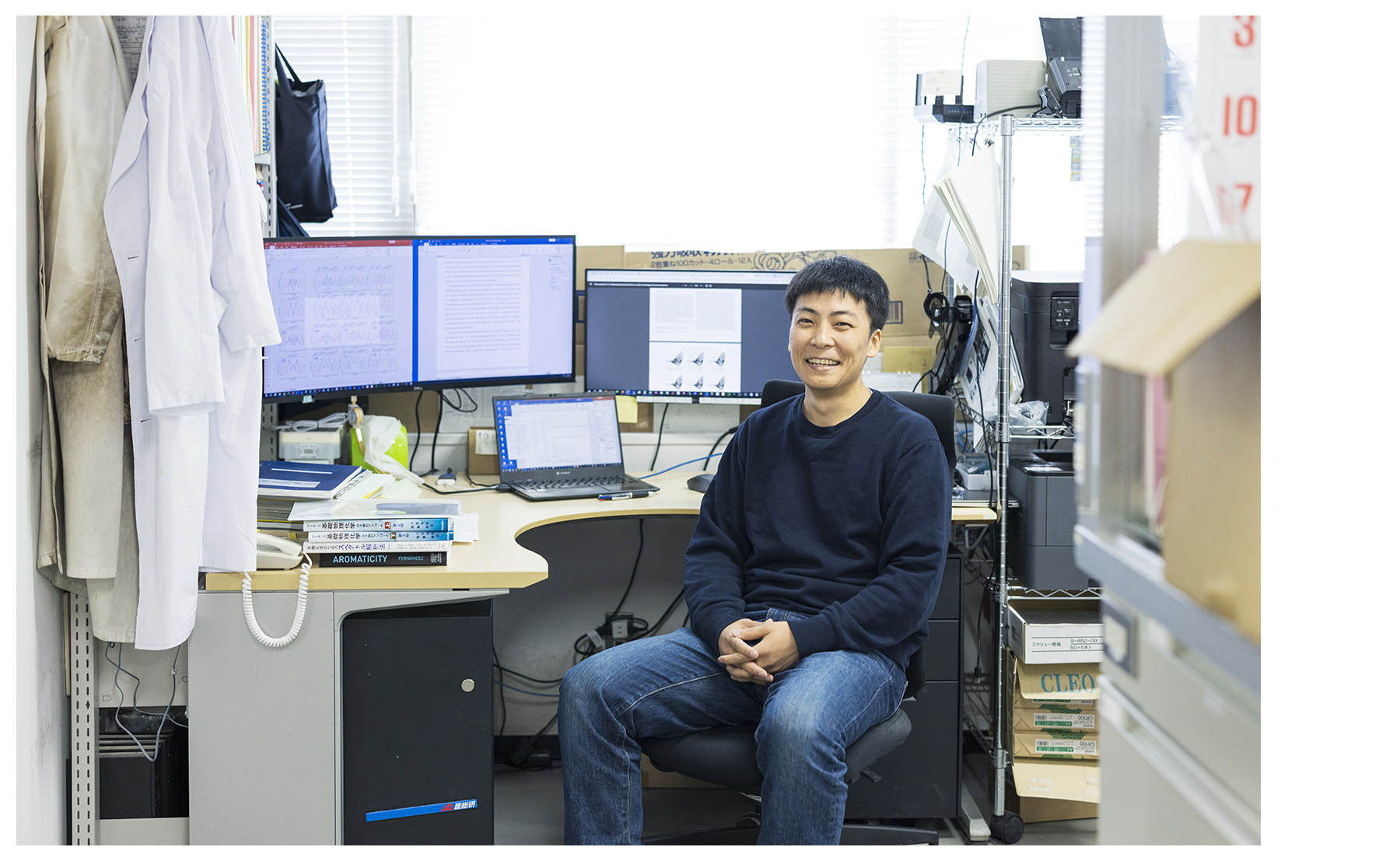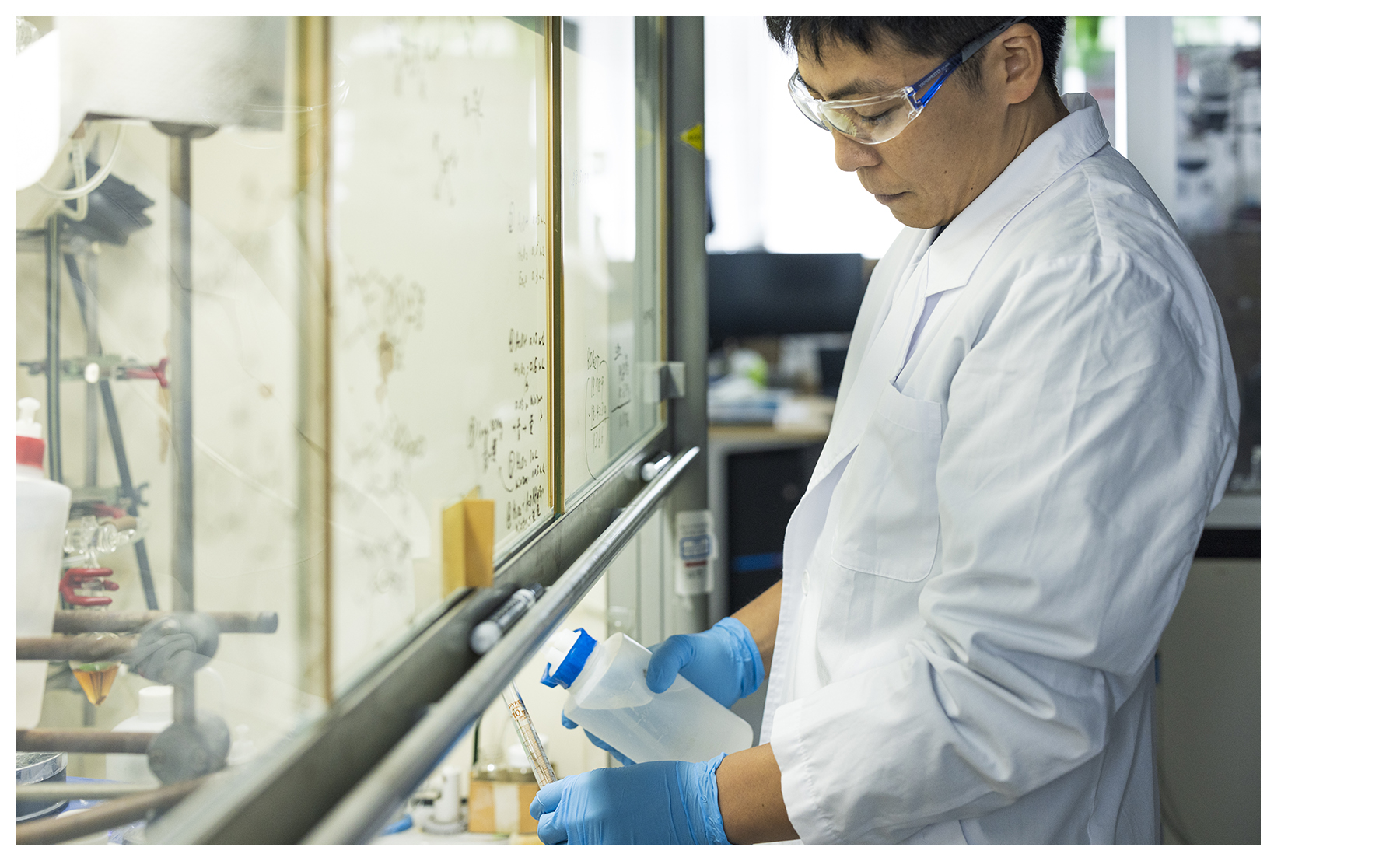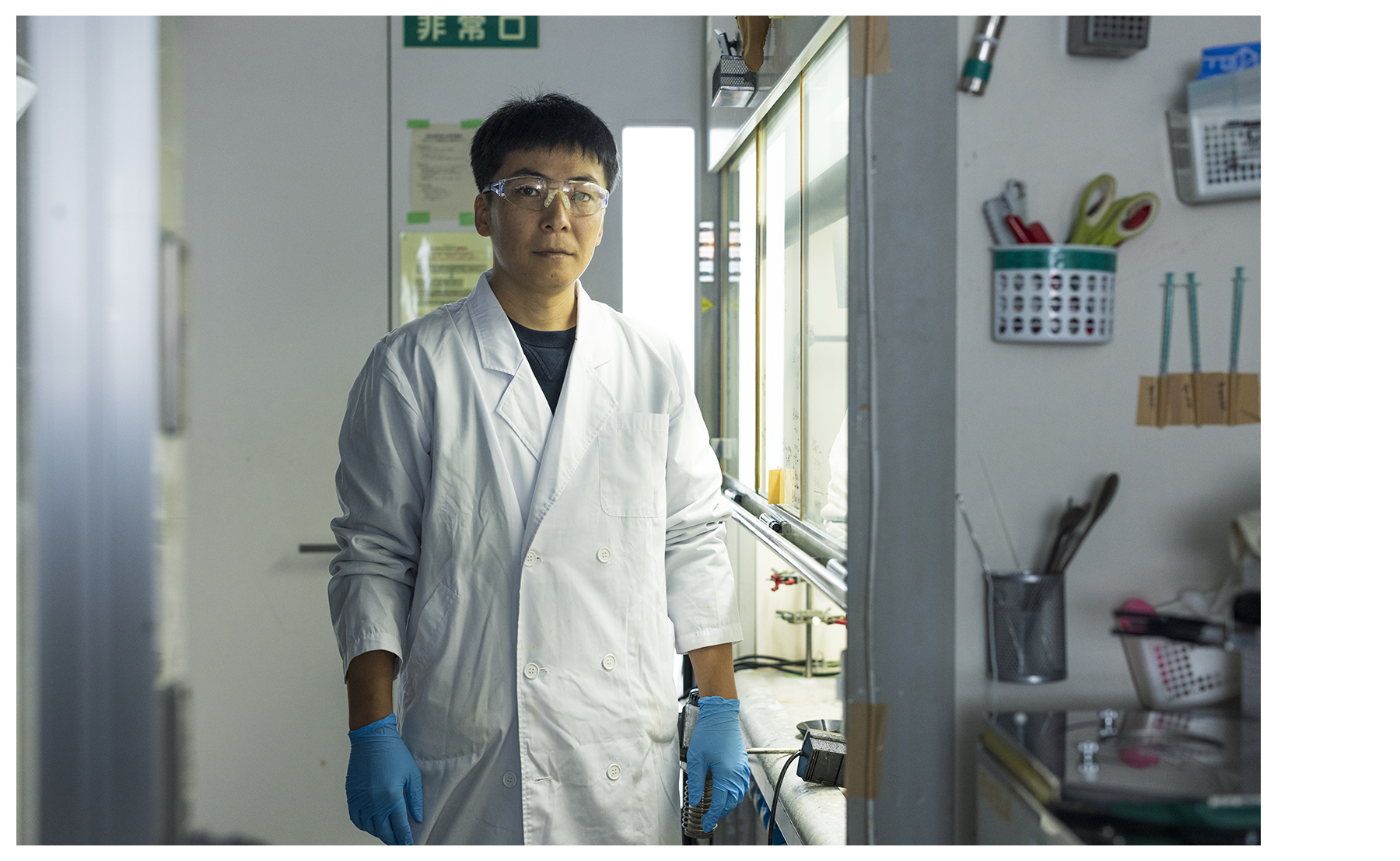My research interest focuses on the design of organic functional materials that exhibit optical and electronic functionalities. π-Conjugated compounds, mainly composed of sp2-hybridized carbon atoms, exhibit a variety of optical and electronic properties—such as electrical conductivity, absorption and emission in the visible to near-infrared region, and redox activity—through delocalized π-bonding and anti-bonding orbitals. The functionalities of such π-conjugated compounds are not only determined by the chemical structure of their π-conjugated units, but also significantly influenced by the molecular packing and orientation in the solid state. However, predicting the packing structure of organic compounds remains a major challenge, making it difficult to design functionality solely through molecular design. Therefore, my research aims to establish rational design guidelines for functional materials by designing and synthesizing molecules, characterizing their structure and properties in the solid state, and gaining a deeper understanding of the structure–function relationships.




- Name:Kohsuke KAWABATA
- Position:Associate Professor of Chemistry
- Laboratory:Laboratory of Organic Chemistry II
- Hometown:Kobe
- Favorite Books:"Uchū Kara No Kikan" by Takashi Tachibana
- Research area:Organic functional Materials Chemistry
- Posted Date:May 9, 2025
1.What kind of the research are you doing?
2.What is the reason for starting your study?
My interest in this field began during my doctoral study, when I worked on a research project focused on the alignment of π-conjugated polymers. I was fascinated by the remarkably high anisotropy exhibited by polymer films with well-aligned molecular orientation, and I became absorbed in achieving high degree of alignment. Now, my focus has expanded beyond molecular orientation to include the control of positional arrangement and, more fundamentally, the molecular design of what to align and how to align it, in pursuit of realizing desired functionalities. However, the aggregation structures of organic molecules are extremely complex and difficult to predict. It is often the case for even a single atomic substitution, addition, or removal to drastically and unexpectedly alter both solid-state structure and functionality. Thus, it is still premature to say that we are truly “controlling” the molecular system for the desired functionality. Even so, it is exciting for me to design and synthesize molecules and experimentally verifying their structures and functions that no one in the world ever knows about. Although the results often differ from my expectations, this very unpredictability is a sign of how much remains to be understood, which is why I continue to be fascinated by research in this field.
3.Message for prospective students
Research is the process of identifying unresolved questions and exploring possible answers to them. This is fundamentally different from classroom learning or laboratory classes up to the third year of undergraduate course, where the answers are already known or the tasks are pre-assigned. Many students feel confused after being assigned to a research lab, as they often find that not only are answers not provided, but even the questions themselves are not given. However, compared to just understanding questions with known answers, the act of freely formulating unknown questions and tackling them is a far more creative and stimulating endeavor. I sincerely hope that students will fully enjoy the exciting exploration process.

